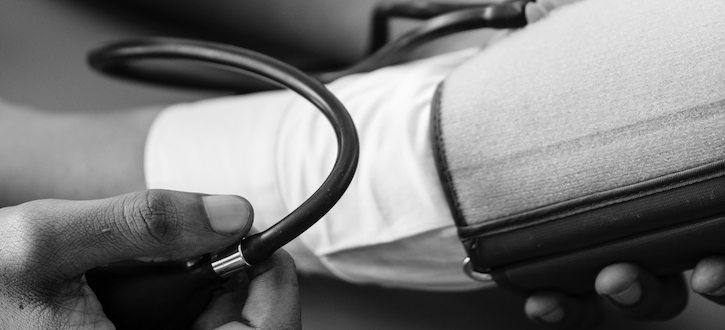How a Video Selfie Could Help Monitor Blood Pressure
The tool predicts systolic blood pressure with nearly 95% accuracy.

Selfies could mean self-monitoring — and self-care, says one new study.
The smartphone-based technology accurately predicts systolic and diastolic blood pressure, based on the findings of new research published in Circulation: Cardiovascular Imaging, an American Heart Association (AHA) journal.
Transdermal optical imaging detects blood flow changes in smartphone-captured facial videos to measure blood pressure. The technology predicted systolic blood pressure with nearly 95% accuracy and diastolic blood pressure with pulse pressure at nearly 96% accuracy.
“If future studies could confirm this exciting result in hypertensive patients and with video camera measurements made during daily life, then obtaining blood pressure information with a click of a camera may become a reality,” said Ramakrishna Mukkamala, Ph.D., professor in the electrical and computer engineering department at Michigan State University in East Lansing.
The technology works by measuring light. The light penetrates the outer layer of the skin and allows digital optical sensors in smartphones to visualize and extra blood flow patterns. Transdermal optical imaging models then predict blood pressure levels.
Researchers measured the blood flow of more than 1,300 Canadian and Chinese adults — all with normal blood pressure — by capturing two-minute videos using an iPhone that had transdermal optical imaging software. The research team compared systolic, diastolic and pulse measurements from the videos captured to typical readings on a cuff-based continuous blood pressure measurement device, they report.
The accuracy of the technology is within international standards for devices used for measuring blood pressure, study lead author Kang Lee, Ph.D., professor and research chair in developmental neuroscience at the University of Toronto in Canada, said.
One limitation of the study: Researchers conducted the videos in a well-controlled environment with fixed lighting. This makes it unclear whether the technology can accurately measure blood pressure in less controlled environments, like homes, according to the findings.
Researchers also did not have an extremely diverse sample of skin tones, lacking patients with extremely dark or fair skin tones.
The research team hopes to reduce the video length from two minutes to 30 seconds to make the technology more user-friendly.
“Cuff-based blood pressure measuring devices, while highly accurate, are inconvenient and uncomfortable,” Lee said. “Users tend not to follow (AHA) guidelines and device manufacturers’ suggestion to take multiple measurements each time.”
“If future studies confirm our results and show this method can be used to measure blood pressures that are clinically high or low, we will have the option of a contactless and non-invasive method to monitor blood pressures conveniently — perhaps anytime and anywhere — for health management purposes,” Lee concluded.
Get the best insights in digital health directly to your inbox.
Related
Risk Prediction Model Helps Identify Risk of Developing Lung Cancer
Model Predicts Cognitive Decline in Patients with Alzheimer's
AI-Enabled ECG Accurate in Detecting A-Fib, Mayo Clinic Study Finds
Podcast: Adoption of Healthcare Tech in the Age of COVID-19 with Dr Kaveh Safavi
June 22nd 2021Kaveh Safavi, MD, JD, global health lead of Accenture Health, discusses how the pandemic influenced the speed at which healthcare organizations adopted new technologies and how this adoption is impacting patient care.